Fermenting the Social, along with the physical
Published 5 June 2022 by Rob La Frenais
In parallel to their new exhibition ‘Hackers, Makers, Thinkers – Collective experiments in social fermenting’, a two days event was proposed at Art Laboratory Berlin.
Hackers, Makers, Thinkers, which has just happened, is a two day international hybrid conference in Berlin exploring ‘what social possibilities can be thawed and revived’ after two years of social distancing and isolation, organised by Art Laboratory Berlin in collaboration with the Weizenbaum Institute (UdK Berlin) and The Einstein Center Digital Future (TU Berlin). It was introduced by Art Laboratory’s Regine Rapp who emphasised the theme would be DIWO (Do It With Others). Commenting on the oft-times criminal association with the word ‘hacker’ she proposed instead a redefinition of the term as a ‘tool-set’ or a ‘collective mind hive’. Makery was able to attend day 1 online, day 2 being formed of offline workshops and walking, talking labs. Some of the speakers were part of the ‘Hackers, Makers, Thinkers’ exhibition collectively curated by Regine Rapp, Tuçe Erel, Christian de Lutz and Tengal Drilon.
Hacking Food Narratives
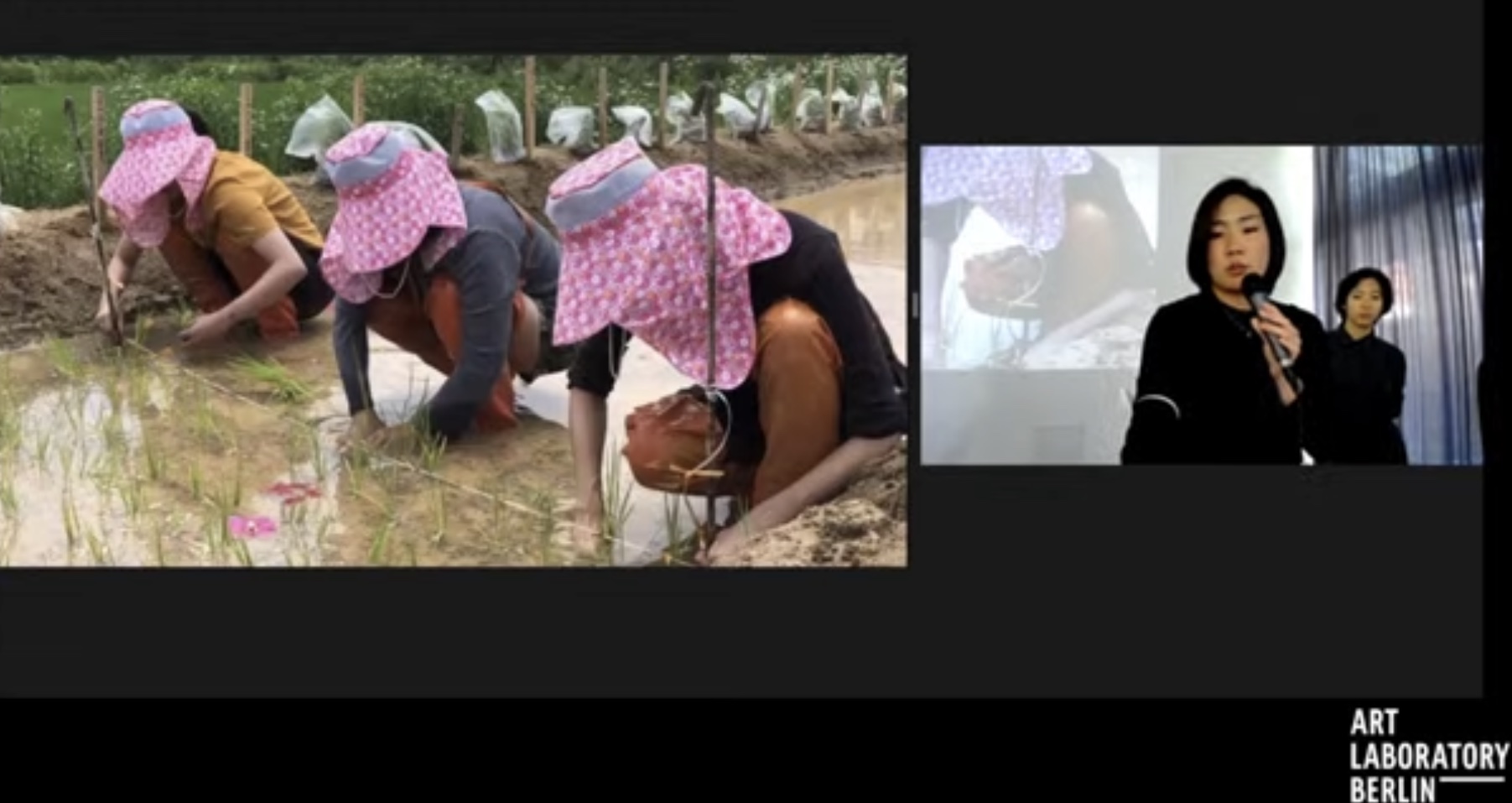
The day kicked off well with the Korean eco-feminist group, the Rice Brewing Sisters Club (RBSC) comprising three artists: Hyemin Son, Aletheia Hyun-Jin Shin and Soyoon Ryu, who formed as a collective after the MeToo movement in Korea that “identify as sisters whose artistic methodology employs the concept of ‘social fermentation’ with the medium of rice”. They have arrived after a long tour of Asian countries, investigating local methods of fermenting rice wine across SE Asia and investigating indigenous micro-organisms (IMOs), working in partnership with multiple independent producers (farmers, brewers, writers, artists, theorists etc). They are now in residence in Berlin and are investigating the properties of different types of Berlin soil, all of which have complex histories, not least because of that city’s geo-political history. They ‘share their germs with the soil’, mindful of the city’s many layers of migrants and migration. They call this ‘planting memories’. The Rice Brewing Sisters Club were originally inspired by one of their grandmothers, who kept in their home a big pot of rice and water covered with a blanket. Slowly, the smell of fermentation begins to fill the house. During their travels they discovered a hidden sisterhood of rice wine ‘aunties’, who pass on their secrets to their daughters and sisters and have different belief systems while brewing, some quite scientific, some more mystical. They also name-checked their brothers in fermentation, the aptly named ‘Soy Division’ an Indonesian theatre and music collective in Berlin. Via their social fermentation they “share their cross-disciplinary camaraderie and epicurean enjoyment, but more importantly, they aspire to a collective spirit that animates other bodies and voices alongside their own to co-create new imagined realities”.
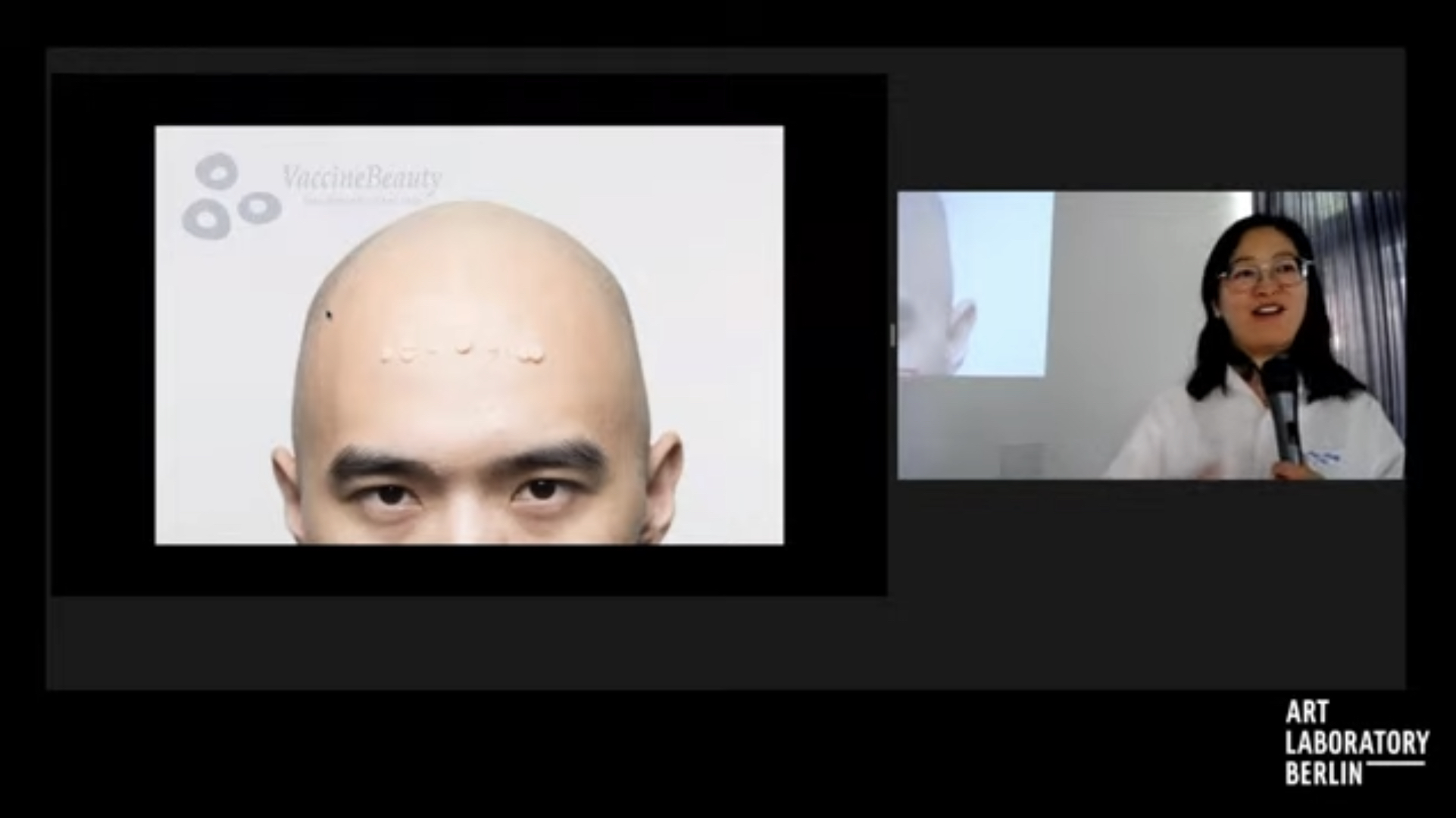
Designer and artist from Taiwan, Pei-Ying Lin, started off by talking about her project Virophilia – a “cookbook written for the 22nd century human beings in consideration for incorporating the positive usage of viruses into our daily life”. Started before the current pandemic, the website has the motto: ‘Viruses do no harm’. Wearing a white lab coat during her talk, she talked about early viruses such as Norovirus and emphasised what she called the ‘neutrality’ of viruses. She discussed how pathogenic viruses could even be seductive, and a ‘mirror to the human’. She discussed her latest project in the context of the current virus ‘Vaccine Beauty’, where people’s vaccination status is openly displayed on the forehead so passers by can see if the wearer is ‘beautiful’ in a viral sense. She also revealed that 90 percent of Dutch tomatoes are infected deliberately with a virus that makes them taste better. Interestingly, the isolation that we have all undergone during COVID may have made us more susceptible to other viruses that were lurking in the wings.
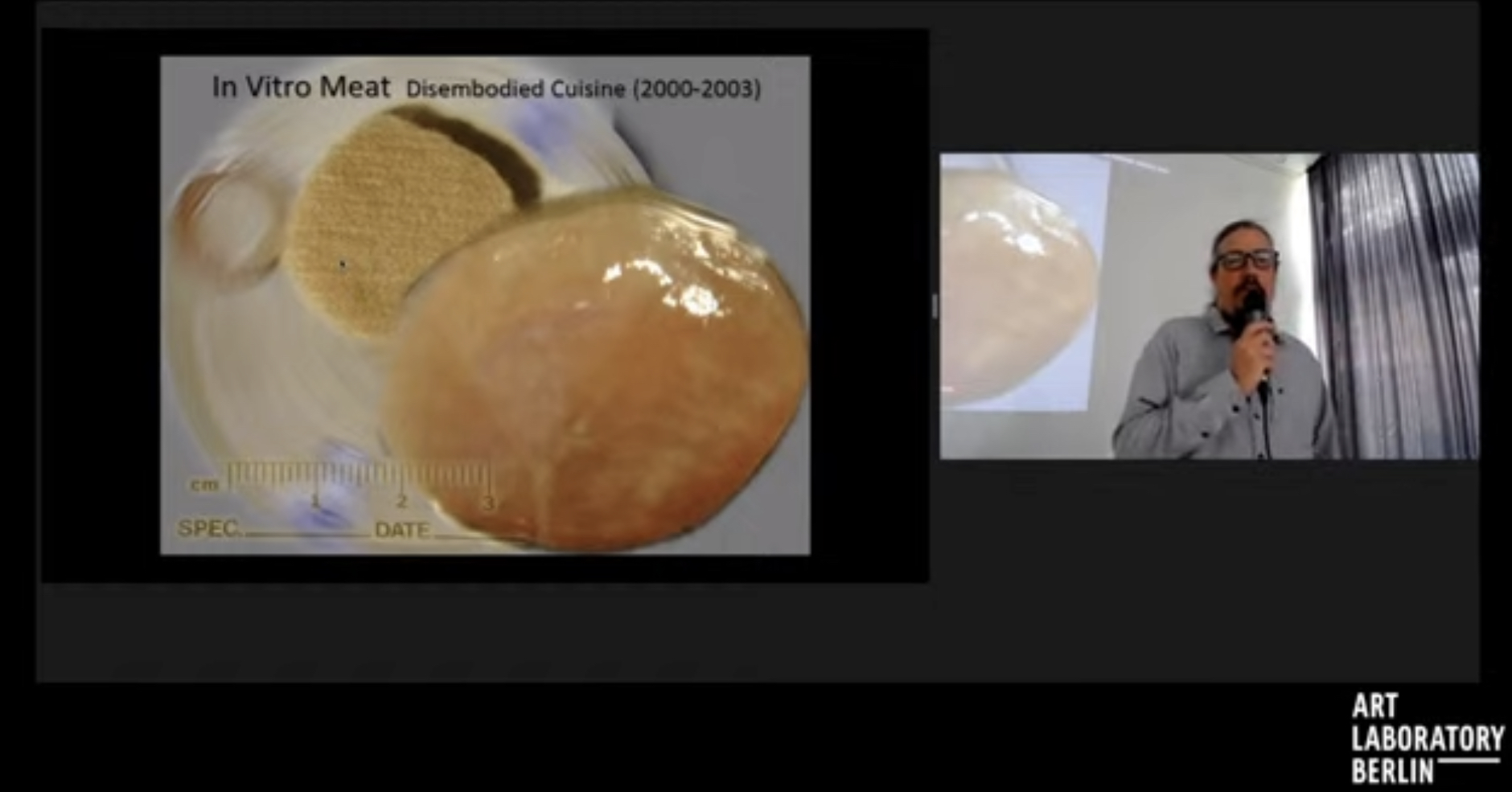
Oron Catts is one of the most well-known and provocative figures in the biological arts and broke many new boundaries, with his partner Ionat Zurr, being the first to create lab-grown meat, for example, in 2000, and ‘Victimless Leather’ in 2004. Since then a vast industry has grown up around the quest to create lab meat and apparently feed the world. Making an in-person appearance for the first time at Art Laboratory Berlin, he had just come from the Munich conference Digital Life Design, where a number of companies who were clearly pursuing a techno-utopian fantasy according to Catts with people citing ‘data as a new food ingredient’. “These companies are a satire of themselves”. He cited companies like Eat Just and New Harvest as examples where ‘`science brings us food from nowhere’ and has come up with his own fake corporation to combat what he calls ‘metabolic rift technologies’ – separation of sentience from nature in concepts like the ‘metaverse’ – 3SDC – or ‘Sunlight Soil and Shit’. They had a 200 dollar a plate launch dinner for 3SDC cooked by indigenous chefs with foraged and naturally-grown food. The price was made artificially high to demonstrate the cost of such foods. He comments on the animal rights movement against bullfighting in Spain which simultaneously denies the implicit violence in burger chains and rages against what he calls ‘secular vitalism’ which he compares with the early Soviet belief that science will make us immortal. There are now even companies that go one step further in separating biology from nature such as the research team at MIT who are trying to manufacture wood without leaves and twigs. I asked him in the live chat if his original work ArtMeatFlesh (2000) was actually intended to be satirical. He replied later “As you know our work is always full of irony. The choice of engineered frog meat should have given it away…”
Symbiotic Elements
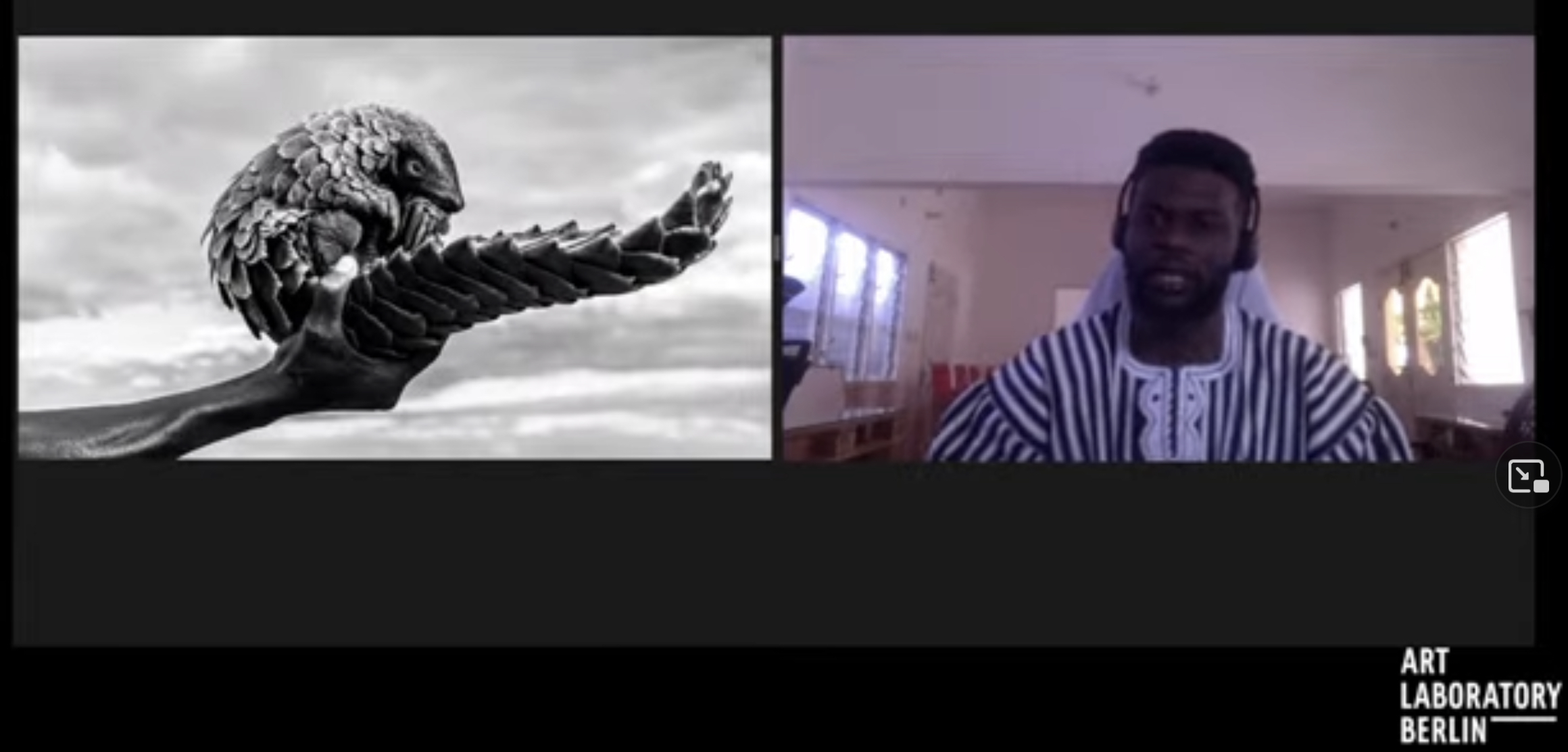
The anthropologist, architect and founder of the fablab Woelab, Sénamé Koffi Agbodjinou, speaking remotely from Lomé, Togo, introduced the concept of capitalism as virus, citing businesses who want to virally expand into becoming countries. He also attacked technology companies as another sort of virus that does not serve communities, instead promoting a form of terminal technological imperialism, where natural reality was not efficient any more. The first form of technology in human history, however, was actually ‘community’ – that is the ability of people to help each other to perform tasks. He went back to Descartes as the European philosopher who saw humans as wholly separate from and superior to nature and nonhuman animals, who were considered mere mindless machines to be mastered and exploited at will. This separation from nature was similar to the separation of human from human, in the creation of tribes and countries and the birth of individualism, the motor of capitalism. He finally cited the widespread trafficking of Pangolins (also a possible cause of Covid-19), a very interesting armoured animal that can freeze and bury its head when attacked and which cannot be kept in captivity, from Africa to places like China as a symptom of this separation in what he called an ‘obscene morality’.
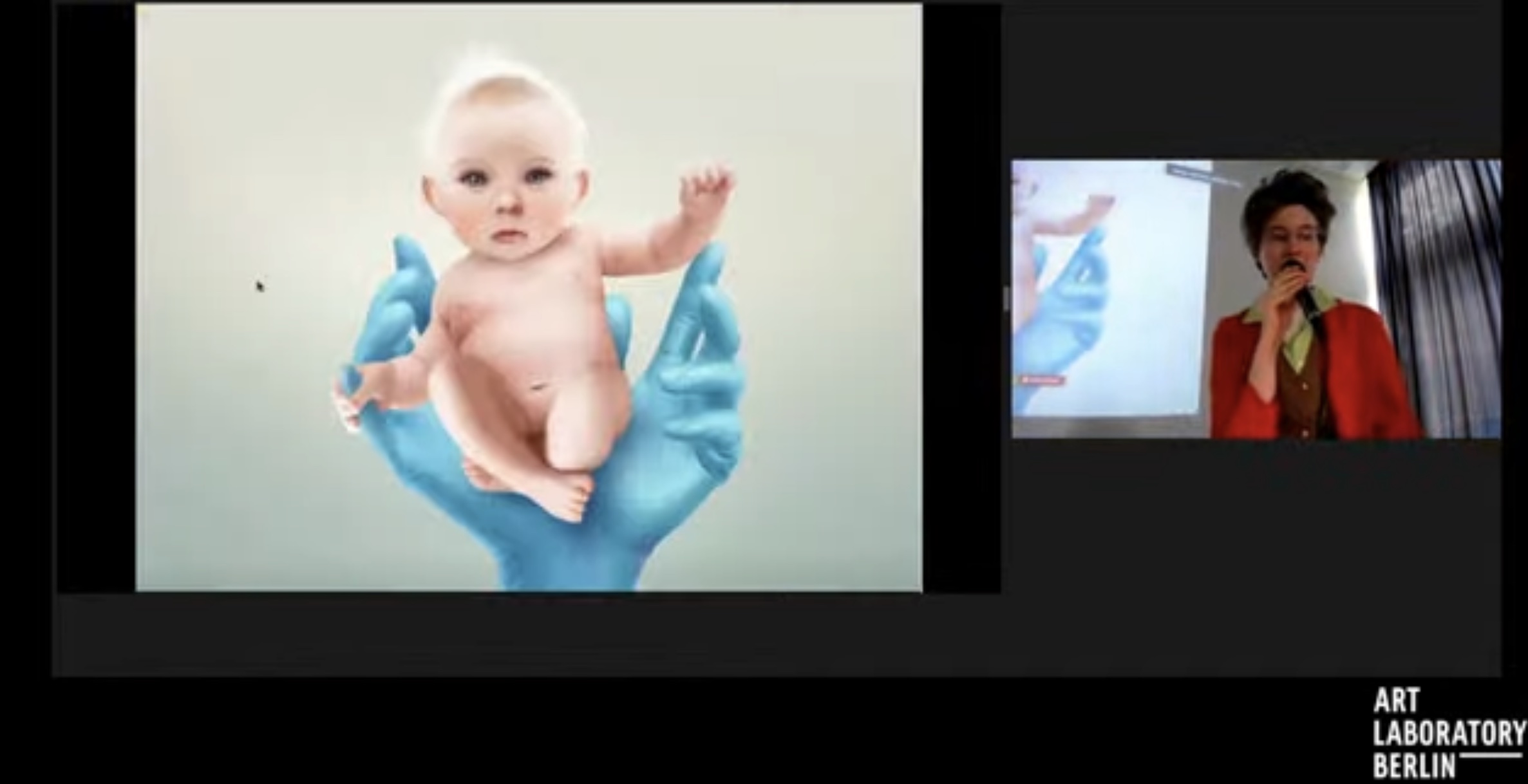
Cammack Lindsey, musician and artist, introduced the cyanobacteria section of this conference by singing a song. Her stories and songs reflect “entanglements between ecosystem failure and the exploitation of labour from humans and non-humans alike under extractive capitalism”. In her talk ‘Holobiont: Relics from the Revolution’ she compared cyanobacteria with the working classes’ exploitation for profit. As is well known, cyanobacteria are some of the oldest living creatures in existence and they developed photosynthesis, as a result of which oxygen was produced. Reproduction of these cyanobacteria resulted in a sudden increase in oxygen levels around 2.5 billion years ago, causing a fundamental change in living conditions on Earth and establishing the basis for life on Earth today. They can survive in extremely hot and cold temperatures and can synthesise food for themselves. Lindsey spoke about both positive and negative aspects of this bacteria. On one hand it is a known relic of symbiosis in the human body, but now, during climate change, it manifests as vast toxic blooms in places like the Gulf of Mexico. Like the lab-grown meat industry, it is also being exploited by industry to create new food products. Her talk was followed by Irene Agriviva, co-founder of the HONF (House of Natural Fiber) in Yogyakarta, Indonesia, who spoke about experiments using rice wine as a power source and Durgā, the Javanese goddess of fertility, source of life and food.
Some interesting scientific research on the ability of cyanobacteria to exist in darkness was presented by Shujie Wu, biologist and plant pathologist, summarising her paper Diversity of Far-red Cyanobacteria in Extreme Environments. Her research answer is yes, photosynthesis can happen in dark places. Her experiments use something called far-red light to regulate shade responses. This has important implications for growing food on long-term space missions such as Mars and also on the planet itself.
Sonic Cyborgs
Here the conference mainly shifted to the Americas, starting with Constanza Piña Pardo’s work on the Quipu project, the Inca recording devices fashioned from strings, quipu being the Inca word for knot. These devices, containing thousands of strings and knots, could be seen as early computational devices, similar to the Jacquard Loom in Europe. They are also seen as astronomical devices. She got an honorary mention for this work in Prix Ars Electronica in 2020. Nayeli Vega in Codes In Knots also pointed out the significance of the use of textiles in pre-Columbia civilisations to store data. In her own project she creates a fictional feminist language, creating connections between precolonial and modern-day knowledge systems in the digital knots she creates. She also points to the string games in indigenous Australian cultures as a form of communication. As artists, she said, we have to reconsider and create our own systems and languages.
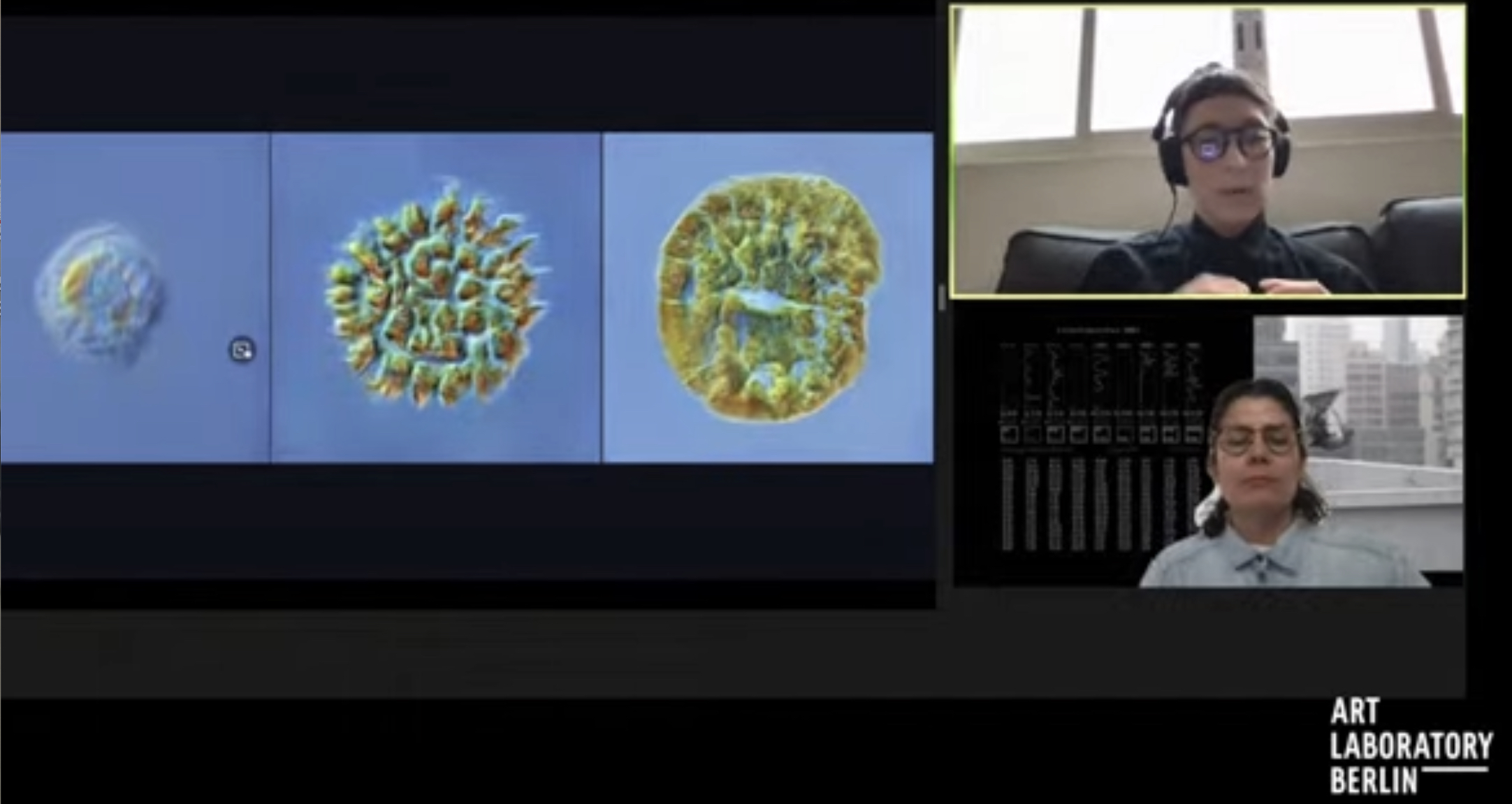
Leslie García and Paloma López of Interspecifics are aiming, in their new work presented here, towards an understanding of algorithmic ‘life’ through creating ‘recipes’ based on actual bacteria from extremophiles. Interested in working with “these highly specialised agencies that have evolved for millions of years on the same planet where we live.”, they synthesise these lifeforms via training a network of ‘companion’ softwares and actual AI simulations of the bacteria, predicting what would happen they came into contact with water and creating an eco-system of algorithms from observations in the lab. They eventually hope to create a whole synthetic genome. In doing so they begin to shift subjectivity away from the human, challenging colonial, white conceptions of artificial intelligence, understanding themselves through these ‘affectionate networks’. It follows on from the large mobile lab project they have developed in Mexico City mapping brains from different shamanic, herbalist, meditation and therapeutic traditions. The work with AI lifeforms is a departure from their usual haptic practice of ‘getting their hands dirty’. In creating this transition from nature to the lab, every thing becomes hyper-clean, in terms of contemporary science and the economics of control.
Finally Maro Pebo, short for Mariana Pérez Bobadilla, also of Interspecifics, brought into the mix notions such as cyborg kinship, moist media and trans-species thinking. She emphasised the importance of materiality – literally warming up the bio-reactor – and giving flesh to the ideas of Donna Haraway and the renewal of kinship and affectionate ties to non-human others. This blended neatly into the final discussion which asked if the work presented today succeeds in actually embodying the ideas originally proposed by Haraway in the essay A Cyborg Manifesto in 1985. It was agreed that this seminal writing, which has inspired so many artists, lacked a non-white perspective, although it was understood that later on Haraway critiqued her own figurations as part of her flow of ideas. Now we can add to the mix ethno-computing and indigenous computing to the networks of kinship and care that Haraway proposed, ‘walking to the future looking backwards’, challenging colonial systems while taking care not to romanticise indigenous practices. Constanza Piña Pardo emphasised the importance of using the senses in exploring systems like the quipu and knot systems, the haptic element of touch. The Rice Brewing Sisters talked about a ‘red thread’ passing back to older knowledge systems and their elasticity. Finally Regine Rapp talked about thinking and living while embracing non-anthropocentric species and metabolic systems from many points of view, including philosophic, performative, deconstructive and anthropological positions, including older, pre-columbian systems of thinking. In this process of social fermentation here, there was a red thread, as mentioned before, that went through most of the presentations. This dialogue of biotech criticism would be continued, with a discussion of elasticity, during the walks the following day.
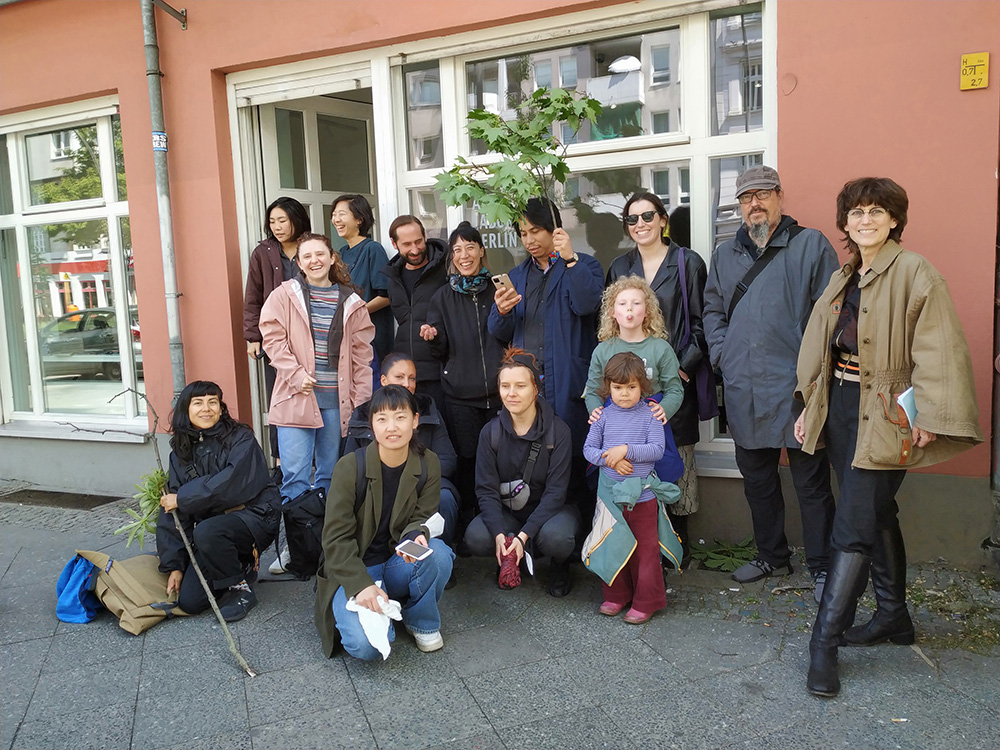
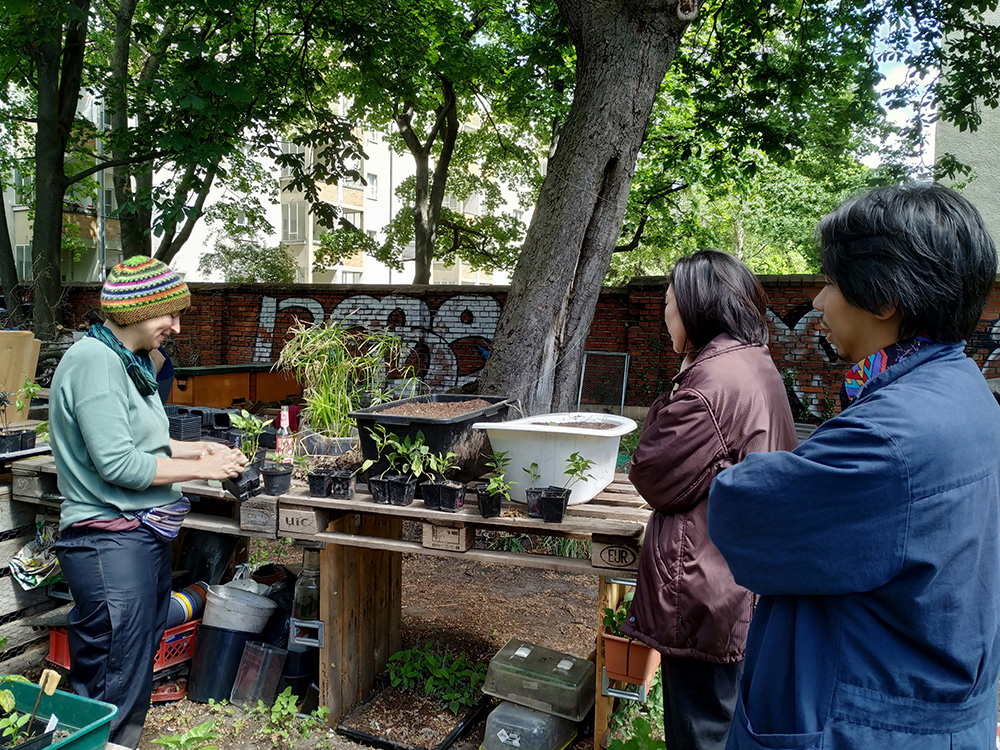
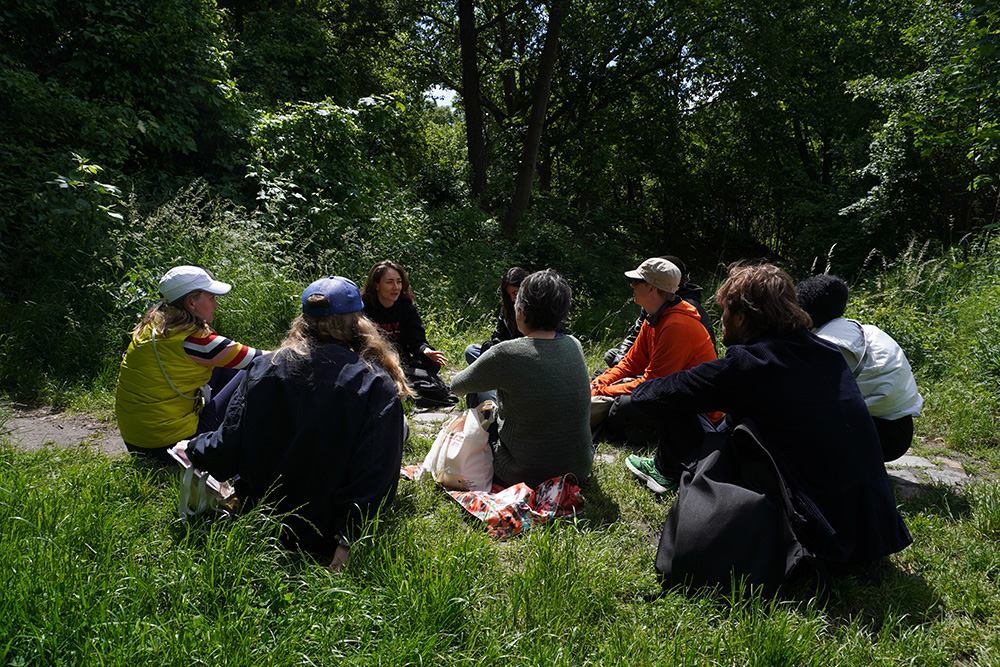
Watch the International Conference ‘Hackers, Makers, Thinkers’.
‘Hackers, Makers, Thinkers’: Exhibition on view until 10 July 2022 at Art Laboratory Berlin.
